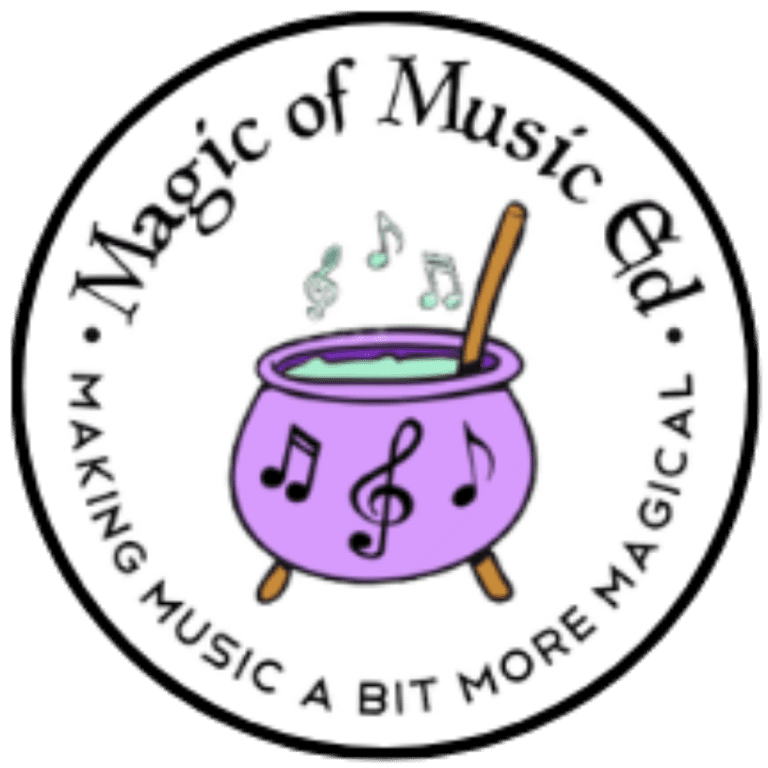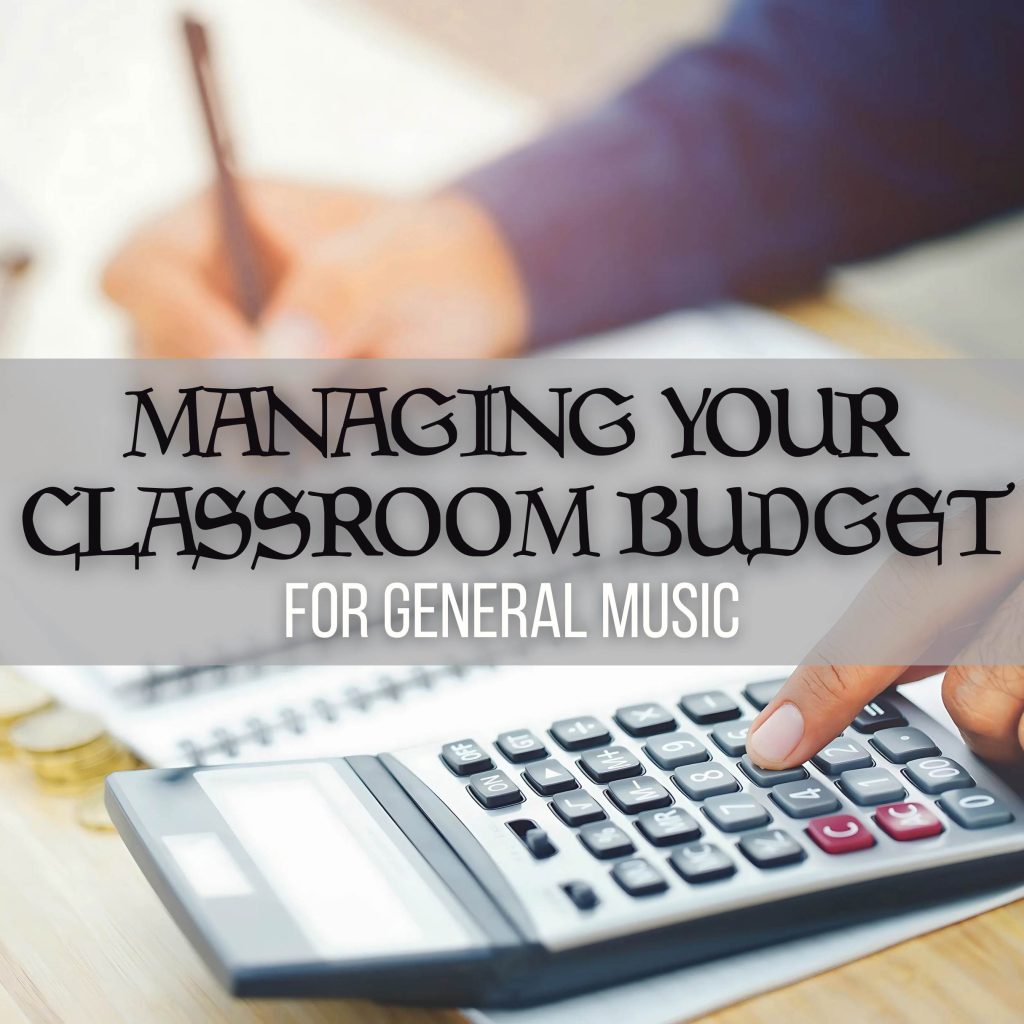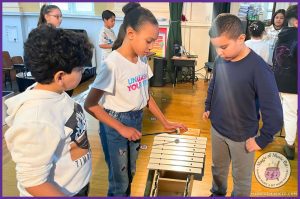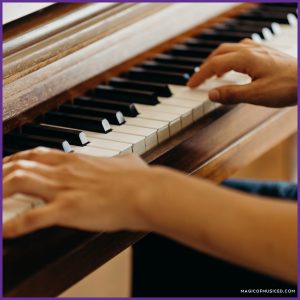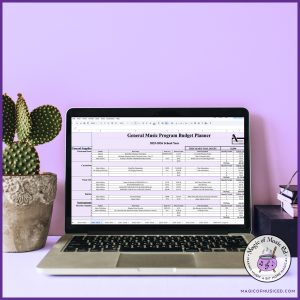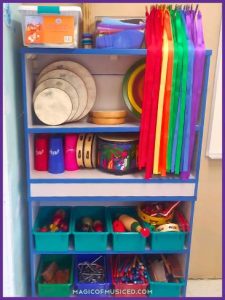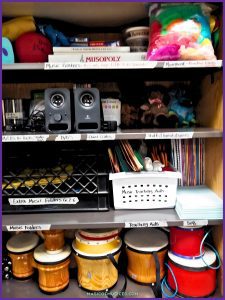I’ll never forget the day I landed my first general music teaching job. The principal was proudly showing me around the building when she stopped at a small supply closet. “This,” she said, “is the music supply room. All the materials for the program are in here.”
I peeked inside, hopeful, only to find some photocopies, a few recorders, and a small cardboard box with a couple of egg shakers, a broken tambourine, and some maracas. That was it. These were the tools I had to teach general music to nearly five hundred K–5 students. I smiled and nodded, but inside, I was already wondering how I could possibly make this work on such a limited classroom budget.
Managing a general music classroom budget can feel overwhelming, especially when your funding is minimal, and you need so much. You may discover that you need instruments, method books, concert music, and other supplies. In situations like this, how do you make smart decisions about what to prioritize each year? In this post, I’ll walk you through ways to stretch your general music budget further, plan ahead with confidence, and make every dollar count. I’ll also share a classroom budget planner that I created in Google Sheets, and which is available on TPT, to help you stay organized and focus your spending where it matters most. Let’s get started!
Step One: Evaluate Your Role and Classroom Budget
If you’re stepping into a new music position, take time to understand what’s expected of you and how much funding you have to meet those expectations.
Ask yourself:
- What grade levels will I be teaching?
- Will I be leading ensembles (choir, band, etc.)?
- How many concerts are required each year?
- What is my approved classroom budget?
- Can I use platforms such as DonorsChoose?
- Can I apply for grants?
- Is my administrator supportive of outside fundraising efforts?
Step Two: Look At The Big Picture First
When you start planning your classroom budget, it’s important to look at the big picture first. I had an amazing professor who used to tell us that a good general music class included singing, playing musical instruments, movement, and listening experiences. I like to use these four categories to brainstorm initial materials. Here are some basic examples:
Singing General Music Supplies
- Pitch Pipe
- Chorus Repertoire
- Songbooks
- Kodaly Curriculum
- Solfege Materials
Musical Instruments for General Music Class
- Recorders
- Ukuleles
- Boomwhackers
- Classroom percussion (rhythm sticks, hand drums, etc.)
- Orff instruments
- Hand Bells
- Piano or Keyboard
Movement Materials for your Classroom Budget
Listening Materials for General Music Class
- Classroom stereo or Bluetooth speaker
- Voice recorder
- Curated recordings
Step Three: Prioritize Your Classroom Budget by Need
When your classroom budget is small, it’s important to remember that you can build a lot on very little. If you need instruments, start by prioritizing shaking, tapping, and scraping instruments. There’s already a lot you can do with just rhythm sticks, sand blocks, egg shakers, and body percussion. Need repertoire on a budget? Consider a subscription to Music K-8 for fresh seasonal concert material. If you’re planning a themed performance, check out my blog posts:
And if you’re looking for curriculum support, I’d love for you to explore my resources. You can even try some of my classroom materials for free by joining the Chamber of Freebies.
Discover Something Magical 👇🏻
Step Four: Carefully Evaluate Options for Large Purchases
Large expenses—like pianos, PA systems, or class sets of ukuleles—require a different kind of planning. Before spending a big chunk of your classroom budget, ask yourself:
- Is this item essential for the coming school year?
- Could I get by with small repairs or temporary solutions?
- Have I explored grant options or educator discounts?
Many music education vendors will often offer bulk or educator pricing, so don’t be afraid to call and ask! And if a big purchase truly moves your program forward, don’t feel guilty about going for it. You know your classroom needs best.
Step Five: Use a General Music Classroom Budget Planner
I’ll be honest—managing a classroom budget has never come naturally to me. I didn’t become a general music teacher because I love spreadsheets or numbers. For a long time, I felt unsure about what to buy, how much money I had left, or whether I was making the best choices for my students.
Budgeting used to be an afterthought—something that came up at the end of the year when my administrator asked for supply lists. I hadn’t kept a running record of what I needed, so I ended up making quick decisions without a clear plan.
That’s why I created a Google Sheets classroom budget planner. It’s simple, but it solved the problem. I use it every year to plan, track, and organize everything for my general music classroom.
Here’s what it helps with:
- Keeping track of your total classroom budget for the year
- Organizing purchases by category (instruments, recordings, concert repertoire, movement materials etc.)
- Allowing you to add items anytime during the year, so you’re not scrambling to create your list in May
- Automatic calculation of total cost, based on quantity and price
- Easy carryover of previous wish list items into next year’s budget plan
- Keeping all of your links and classroom ideas at your fingertips when you’re ready to order
If managing your general music classroom budget ever feels stressful, this planner might be exactly what you need. I added it to my TPT shop in case it’s something that would make your life easier too 👇🏻
Step Six: Always Have A Music Classroom Wishlist!
You never know when surprise funding might pop up. A generous parent, a supportive principal, or an unexpected grant might land in your lap with one big question: “What do you need?”
Trust me, you don’t want to answer with, “I don’t know.”
Keep a running wishlist with items at different price points. That way, when funding appears, you’ll be ready with ideas that will genuinely improve your classroom.
Here’s a real example: I once received an unexpected $500 grant. Because I had a wish list ready, I quickly opted for hand drums and frame drums. The students loved them! We took photos, wrote thank-you notes, and made sure the donor saw the immediate impact their gift made on the general music program.
Wrapping It Up!
If you’re starting your program from scratch, it’s okay if your classroom doesn’t immediately look Instagram-worthy in year one. When I was student teaching, I was amazed at my mentor’s colorful classroom stocked with Orff xylophones, ukuleles, movement props, and a cozy reading corner. I asked her how long it took, and I’ll never forget her answer: “Seventeen years.”
Building your general music inventory takes time, strategy, and forward thinking. Keep your focus on what matters most—quality music experiences for your students—and use your classroom budget to support that vision.
If you’d like a little help organizing your purchases, check out my Elementary General Music Budget Planner on TPT. And, if you’re looking for music classroom supply ideas, head over to my post:
👉 15 Amazon Essentials for Elementary Music Teachers.
You’ve got this!
A little note 🎵: This post contains affiliate links. If you decide to grab something through one of them, I may earn a small commission (at no extra cost to you). I only recommend resources I truly believe in and use myself, and your support allows me to keep creating helpful content for music teachers like you. For more details, you can check out my full disclosure statement.
